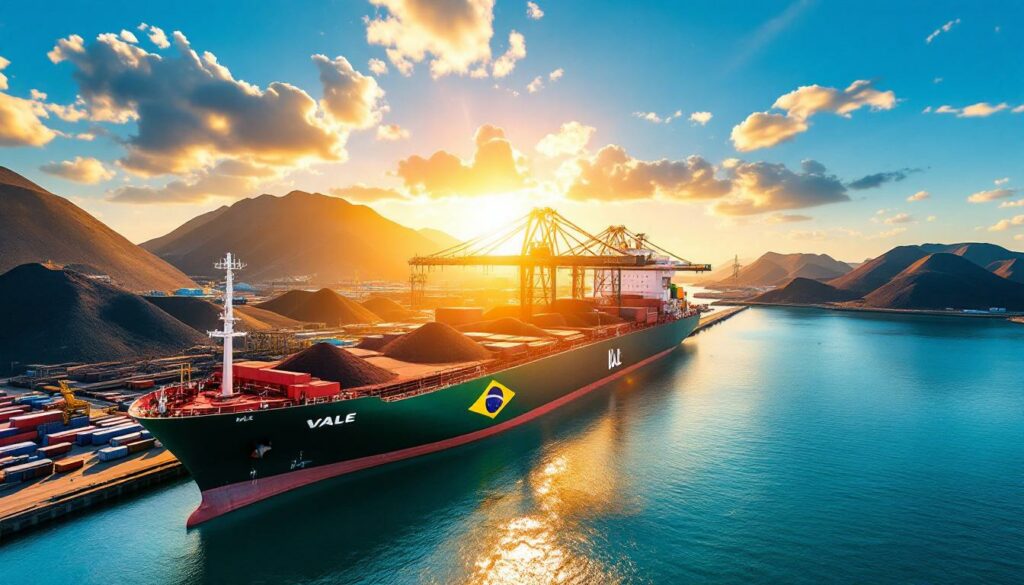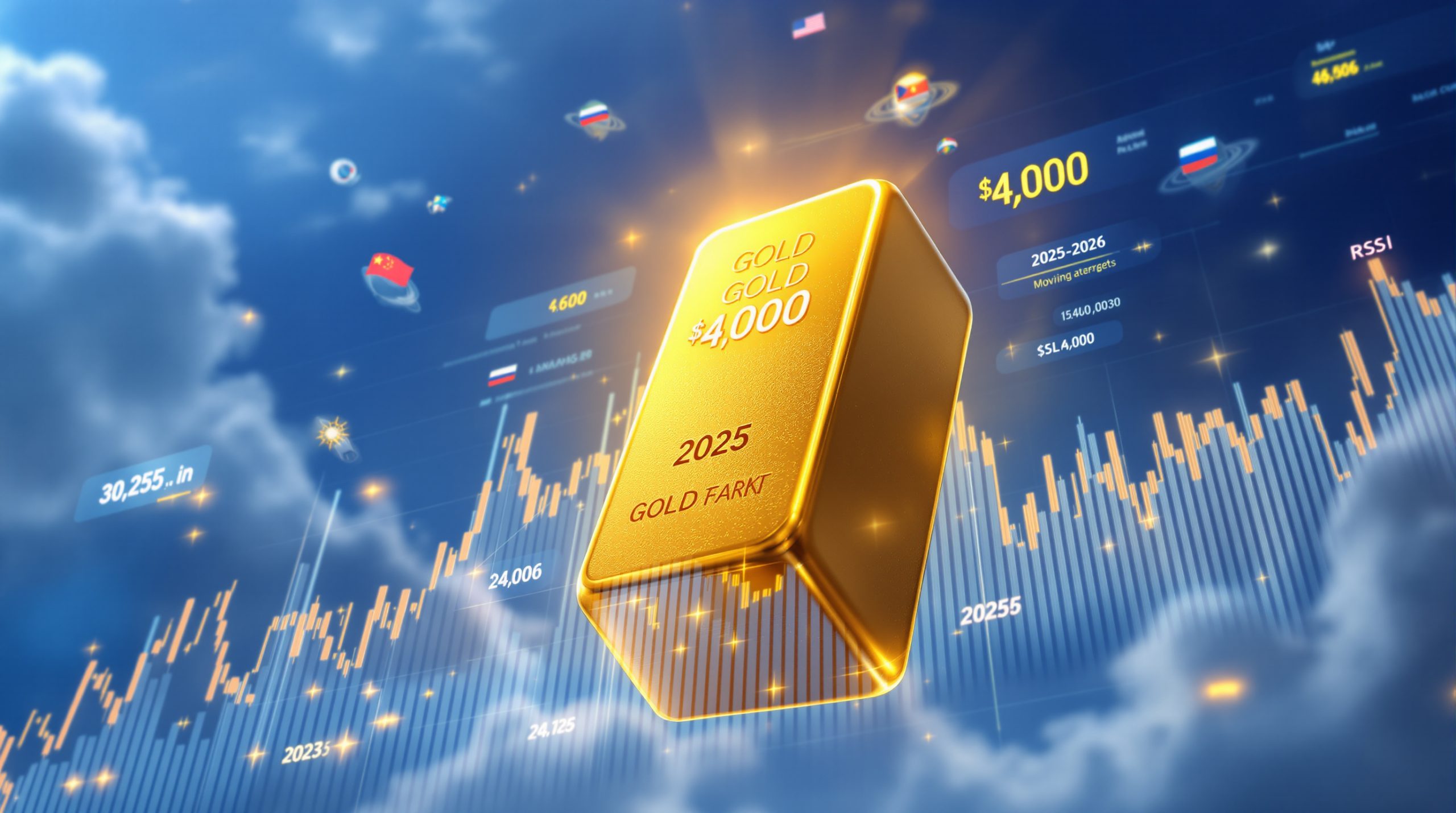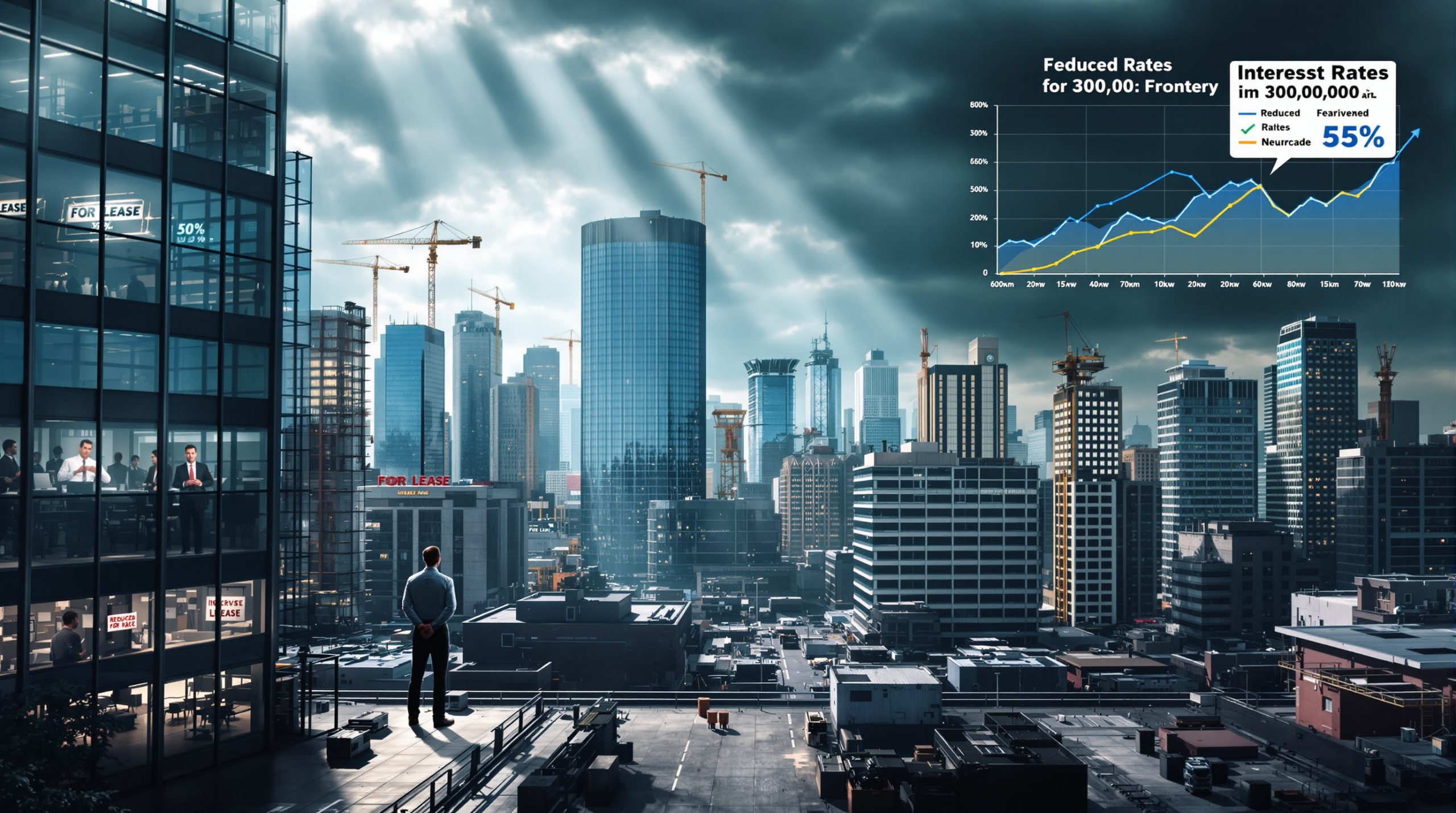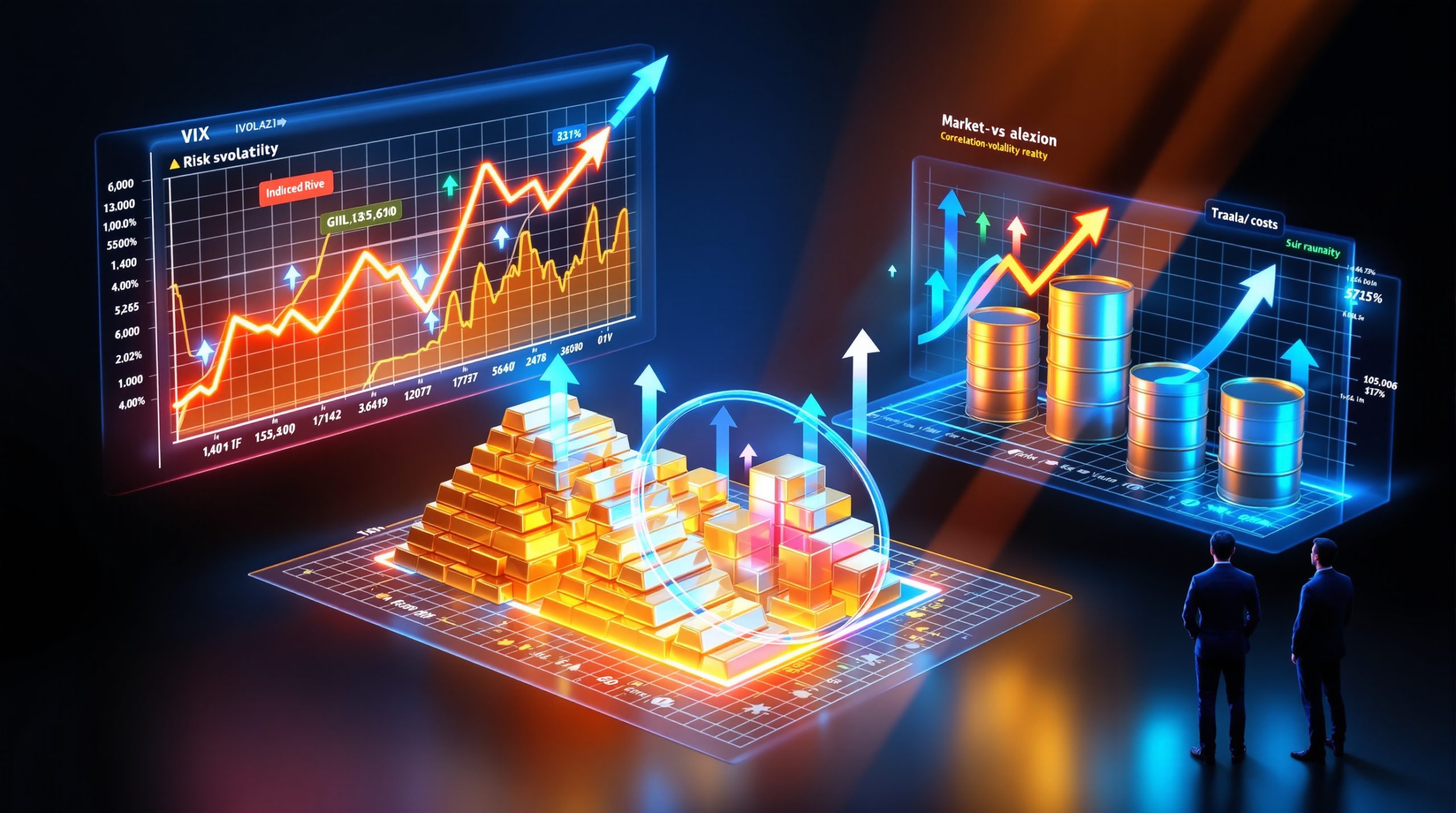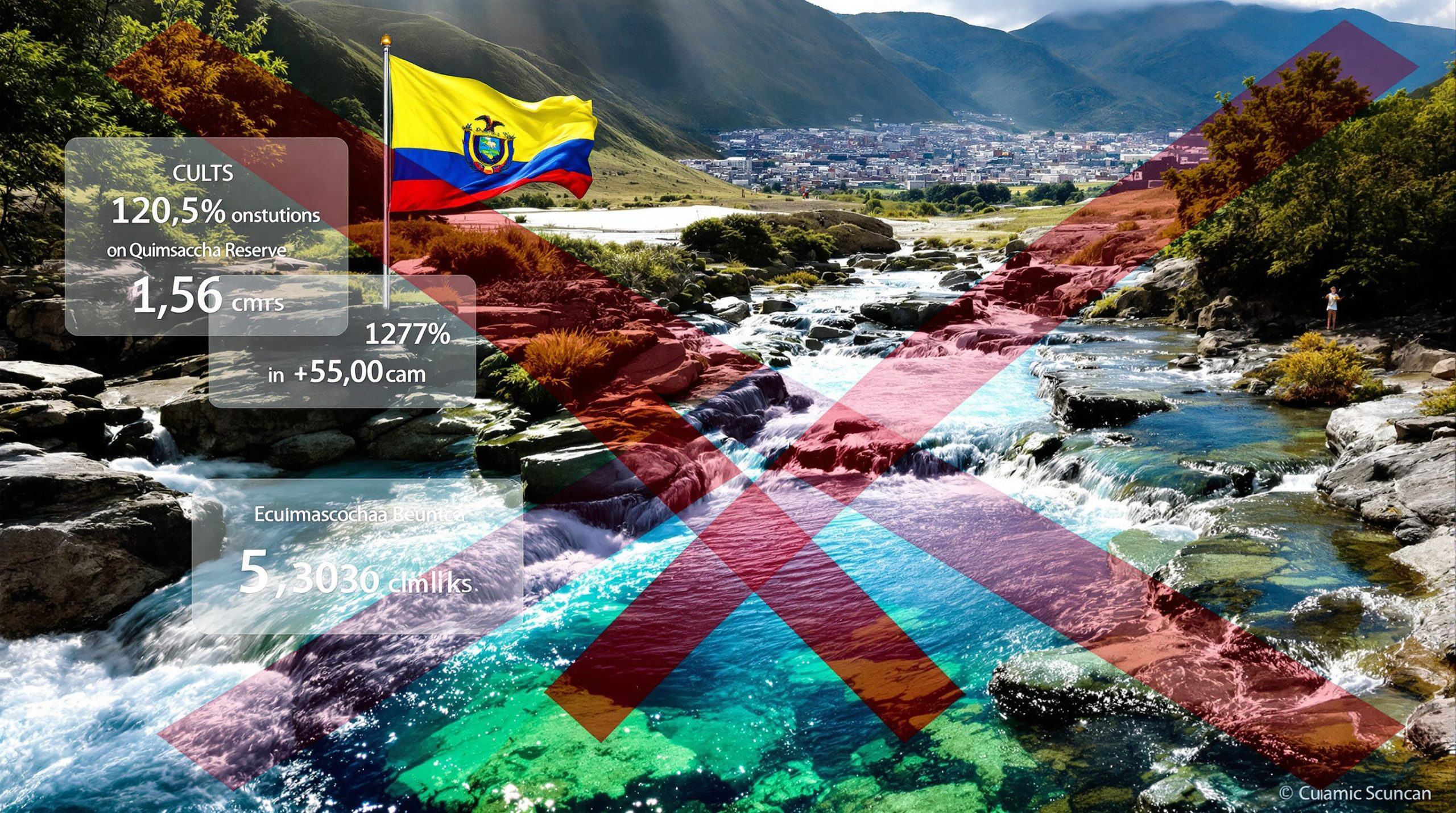Brazil's Iron Ore Exports Reach Historic Milestone in July 2025
Brazil achieved an unprecedented milestone in July 2025, exporting 41.1 million metric tons of iron ore—shattering the previous record of 39.5 million tons set in December 2015. This remarkable achievement reinforces Brazil's position as the world's second-largest iron ore exporter after Australia and highlights significant developments in the global iron ore market.
Key Export Statistics for July 2025
- Total export volume: 41.1 million metric tons
- Year-over-year increase: 4.7% compared to July 2024
- Export revenue: $2.62 billion
- Revenue decline: 8.8% year-over-year despite volume increase
- Price impact: Approximately 13% price reduction compared to July 2024
What Drove Brazil's Record Iron Ore Exports in July 2025?
The surge in Brazil's iron ore exports can be attributed to a combination of improved operational efficiency, strategic market positioning, and increasing global demand. According to the Brazilian mining lobby group Ibram, "June and July saw confidence rebound in the sector due to the progress of large projects in China and a resumption of production."
Chinese Infrastructure Revival
China's commitment to infrastructure development has played a pivotal role in driving demand for Brazilian iron ore. Following a period of economic uncertainty, Chinese authorities implemented stimulus measures focused on infrastructure investments to reinvigorate economic growth.
The resumption of previously paused construction projects, combined with the announcement of new infrastructure initiatives, created a substantial demand surge for high-quality iron ore. Brazilian ore, known for its superior iron content, became particularly attractive to Chinese steel producers seeking to meet strict quality requirements for these high-profile projects.
Operational Improvements by Brazilian Miners
Brazilian mining companies have significantly enhanced their operational efficiency over the past 18 months. After facing production challenges in previous years, major producers implemented advanced technologies and optimized mining processes to increase output while maintaining safety standards.
These operational improvements included:
- Implementation of autonomous haulage systems at key mining sites
- Enhanced ore processing techniques to improve recovery rates
- Optimization of loading facilities at major ports
- Upgraded rail transportation networks for faster mine-to-port delivery
Favorable Weather Conditions
July 2025 experienced exceptionally favorable weather conditions across Brazil's major mining regions. Unlike previous years where heavy rainfall disrupted operations, the dry conditions allowed for continuous mining activities and smooth logistics operations, contributing significantly to the record export volume.
How Does This Achievement Impact Brazil's Trade Balance?
Despite the record export volumes, Brazil's overall trade performance shows interesting contrasts that reveal broader economic patterns affecting the nation's financial health.
July 2025 Trade Performance
- Trade surplus: $7.1 billion
- Year-over-year change: 6.3% decrease from July 2024
- Export composition: Iron ore remains one of Brazil's three primary exports alongside oils and soybeans
- Price-volume relationship: Volume increase (4.7%) offset by price decline analysis (13%)
Economic Significance for Brazil
The record iron ore exports come at a critical time for Brazil's economy, which continues to rely heavily on commodity exports. The increased volume partially compensates for price declines, helping maintain foreign exchange earnings despite challenging market conditions.
Foreign Exchange Stabilization
The robust export volumes have helped stabilize Brazil's currency in international markets. The continuous flow of foreign exchange from iron ore exports has provided critical support to the Brazilian real, which has faced pressure from global economic uncertainties and domestic fiscal challenges.
Diversification Challenges
While the record iron ore exports represent a significant achievement, they also highlight Brazil's continued dependence on commodity exports. Economic analysts have pointed to the need for greater diversification to reduce vulnerability to price fluctuations in global commodity markets.
"Brazil's ability to achieve record iron ore export volumes demonstrates operational excellence, but the corresponding revenue decline underscores the persistent challenge of commodity price volatility," notes a recent economic analysis from the Brazilian Foreign Trade Association.
What Market Factors Are Driving Iron Ore Demand?
Several key market dynamics have contributed to the surge in Brazilian iron ore exports, with developments in China playing a particularly significant role in reshaping iron ore demand spotlight.
Chinese Steel Production Resurgence
China's steel industry has experienced a notable resurgence following a period of production restrictions. Environmental regulations had previously limited steel output in various regions, but strategic adjustments to these policies have allowed for increased production while maintaining environmental standards.
Key indicators of this resurgence include:
- Blast furnace utilization rates increasing from 76% in early 2025 to 89% by July
- Daily crude steel output reaching 2.97 million tons in July 2025
- Steel inventory levels decreasing by 15% from April to July 2025
- Steel mill profit margins improving to an average of 5.2% in Q2 2025
Infrastructure Investment Acceleration
The Chinese government has accelerated infrastructure investments as part of its economic stabilization strategy. This acceleration has been particularly evident in:
- High-speed rail projects: 1,600 kilometers of new lines approved in Q2 2025
- Urban renewal initiatives: 23 major cities launching significant urban transformation projects
- Renewable energy infrastructure: Substantial investments in wind and solar power installations
- Water management projects: Large-scale reservoirs and flood control systems
Global Steel Demand Recovery
Beyond China, global steel demand has shown signs of recovery, particularly in emerging economies. Infrastructure development across Southeast Asia, India, and parts of Africa has created additional demand for iron ore, benefiting major exporters like Brazil.
Price Stabilization Signals
After experiencing downward pressure in early 2025, iron ore price trends began stabilizing in late June, providing miners with greater confidence to maximize production. This price stabilization, coupled with strong volume demand, created optimal conditions for Brazil to achieve its record export figures.
Who Are the Key Players in Brazil's Iron Ore Export Surge?
Brazil's iron ore industry is dominated by major mining companies, with Vale playing the most significant role in the country's export performance.
Vale: Brazil's Mining Giant
Vale remains the undisputed leader in Brazil's iron ore sector, accounting for approximately 70% of the country's iron ore exports. The company's performance has been bolstered by:
- S11D Complex: Full operational capacity at its flagship mine in Carajás
- Brucutu mine reactivation: Returning to full production following earlier restrictions
- Logistics optimization: Enhanced rail and port infrastructure reducing delivery times
- Quality improvements: Higher concentration of premium-grade ore in its export mix
Emerging Regional Producers
While Vale dominates the market, several smaller producers have contributed significantly to Brazil's record export performance:
- CSN Mining: Expanded production at Casa de Pedra mine in Minas Gerais
- Samarco: Continued recovery of operations following earlier production challenges
- Anglo American Brazil: Steady output from its Minas-Rio operation
- Gerdau Mining: Increased production from its iron ore operations
Strategic Production Decisions
Brazilian miners made strategic decisions to capitalize on favorable market conditions in July 2025. These included:
- Accelerating production from high-grade deposits
- Prioritizing export shipments over domestic supply
- Optimizing product mix to maximize revenue
- Temporarily increasing production rates at key mining sites
Technological Innovation
The implementation of advanced technologies has enabled Brazilian miners to achieve higher production efficiency. Notable innovations include:
- Artificial intelligence systems for maintenance prediction
- Drone-based surveying and monitoring solutions
- Advanced ore sorting technologies reducing waste
- Digital twins of mining operations enabling process optimization
How Does Brazil Compare to Other Global Iron Ore Exporters?
Brazil's record exports must be viewed in the context of global iron ore trade patterns and competition with other major producing nations.
Global Export Rankings (2025)
Brazil's position in the global iron ore market remains strong, though it continues to trail Australia iron ore leadership in total export volume:
| Rank | Country | Monthly Export Volume (July 2025) | Market Share |
|---|---|---|---|
| 1 | Australia | 78.3 million tons | 57% |
| 2 | Brazil | 41.1 million tons | 30% |
| 3 | South Africa | 5.4 million tons | 4% |
| 4 | Canada | 4.8 million tons | 3.5% |
| 5 | Others | 7.5 million tons | 5.5% |
Quality Differentials
Brazilian iron ore typically offers higher iron content than many competitors, providing a competitive advantage in premium markets:
- Brazilian ore: Typically 65-67% Fe content
- Australian ore: Usually 58-62% Fe content
- Premium pricing: High-grade Brazilian ore commands $10-15 per ton premium
Geographical Advantages and Challenges
Brazil's position relative to major markets presents both challenges and opportunities:
- Distance to Asian markets: 11,000 nautical miles vs. Australia's 3,500 miles
- Shipping costs: $15-18 per ton vs. Australia's $7-9 per ton to China
- European market proximity: Competitive advantage for shipments to European steel producers
- Weather reliability: Australian shipments less impacted by seasonal weather variations
Environmental Considerations
Environmental performance is increasingly important in the global iron ore market:
- Carbon footprint: Brazilian ore production generally has lower direct emissions but higher transport emissions
- Sustainability initiatives: Major Brazilian miners investing heavily in emissions reduction technologies
- Certification programs: Increasing adoption of responsible mining certifications by Brazilian producers
What Are the Price Trends and Revenue Implications?
Despite record volumes, the financial returns from Brazil's iron ore exports show the impact of global price pressures.
Price Analysis
The disconnect between volume and revenue highlights the significant impact of price changes on Brazil's export earnings:
- July 2025 average price: $63.80 per ton (13% lower than July 2024)
- Revenue impact: $2.62 billion in export revenue (8.8% decrease year-over-year)
- Price-volume relationship: Volume increase of 4.7% insufficient to offset price decline
Price Recovery Indicators
Several indicators suggest potential price stabilization in the iron ore market:
- Futures contracts: Iron ore futures on the Singapore Exchange showing signs of recovery
- Inventory levels: Chinese port inventories declining 8.2% from May to July 2025
- Production costs: Rising operational expenses establishing potential price floor
- Market sentiment: Improved confidence reflected in mining company stock performance
Revenue Diversification Strategies
Brazilian miners are implementing strategies to mitigate the impact of price volatility:
- Product mix optimization: Increasing the proportion of premium products
- Value-added processing: Investments in pelletizing and other beneficiation processes
- Strategic sales agreements: Long-term contracts with price stability mechanisms
- Cost optimization: Continued focus on operational efficiency to maintain profitability
Comparative Revenue Analysis
When analyzed against previous record export months, July 2025's performance reveals interesting patterns:
| Period | Export Volume | Average Price | Total Revenue |
|---|---|---|---|
| July 2025 | 41.1 million tons | $63.80/ton | $2.62 billion |
| July 2024 | 39.3 million tons | $73.30/ton | $2.88 billion |
| December 2015 | 39.5 million tons | $41.20/ton | $1.63 billion |
How Sustainable Is Brazil's Iron Ore Export Growth?
Looking beyond the July record, several factors will determine whether Brazil can maintain or exceed these export levels.
Production Capacity and Expansion
Current production capacity and planned expansions suggest potential for sustained high export volumes:
- Vale's capacity utilization: Currently at 89% with plans to reach 95% by end of 2025
- Expansion projects: Multiple projects underway to add 30 million tons of annual capacity by 2027
- Reserve quality: High-grade reserves sufficient for decades of production at current rates
- Technological improvements: Ongoing investments expected to increase recovery rates by 3-5%
Logistical Infrastructure Development
Transportation infrastructure remains critical to sustaining high export volumes:
- Rail capacity enhancement: Northern and Southeastern rail systems undergoing expansion
- Port facilities modernization: Automated loading systems being installed at major ports
- Multimodal integration: Improved coordination between rail, road, and port operations
- Storage capacity: Increased buffer storage at ports to manage seasonal variations
Market Demand Sustainability
The sustainability of demand for Brazilian iron ore depends on several factors:
- Chinese economic trajectory: Continued infrastructure investment critical for maintaining demand
- Steel industry decarbonization: Potential preference for high-grade ore as emissions standards tighten
- Competing materials: Impact of increased steel recycling and alternative construction materials
- Regional demand diversification: Growing importance of non-Chinese markets
Regulatory Environment
Brazil's regulatory framework continues to evolve, affecting the mining sector's operational capabilities:
- Environmental permitting: Streamlined processes reducing approval timelines
- Safety regulations: Enhanced standards following historical incidents
- Taxation policy: Potential changes to mining royalty structures
- Foreign investment rules: Policies affecting capital availability for expansion projects
What Are the Environmental and Social Implications?
Brazil's mining sector faces increasing scrutiny regarding environmental and social impacts, which could influence future export capabilities.
Environmental Management Practices
The mining industry has implemented improved environmental management systems:
- Water management: Closed-loop water systems reducing freshwater consumption by up to 70%
- Tailings management: Dry-stacking and filtered tailings technologies reducing dam requirements
- Land rehabilitation: Progressive restoration of mined areas with native vegetation
- Biodiversity protection: Buffer zones and wildlife corridors around mining operations
Social License to Operate
Maintaining community support remains essential for operational continuity:
- Local employment: Mining operations providing over 170,000 direct jobs in Brazil
- Community investment: Education, healthcare, and infrastructure programs in mining regions
- Indigenous consultation: Enhanced dialogue processes with affected communities
- Benefit sharing: Local content requirements and regional development initiatives
"The sustainability of Brazil's mining sector depends not just on geological resources but on our ability to operate in harmony with communities and ecosystems," states a prominent Brazilian mining industry association report.
Climate Change Considerations
The iron ore sector is addressing climate change through various initiatives:
- Emissions reduction targets: Major producers committing to 30-40% reductions by 2030
- Renewable energy: Solar and wind projects powering mining operations
- Electrification: Conversion of mining fleets from diesel to electric power
- Carbon offset programs: Reforestation projects in mining regions
Safety and Risk Management
Following historical incidents, safety has become a top priority:
- Dam safety standards: Independent monitoring and inspection protocols
- Emergency preparedness: Enhanced evacuation plans for communities in potential impact zones
- Safety culture initiatives: Behavioral safety programs and zero-harm targets
- Technological solutions: Remote monitoring systems for critical infrastructure
FAQ: Brazil's Iron Ore Export Performance
What factors contributed to Brazil's record iron ore exports in July 2025?
A combination of increased Chinese infrastructure investment, improved operational efficiency by Brazilian miners, favorable weather conditions, and strategic production decisions by major companies led to the record export volume of 41.1 million metric tons. The Brazilian mining lobby group Ibram specifically cited "the progress of large projects in China and a resumption of production" as key factors driving demand.
How do Brazil's iron ore exports compare to previous years?
July 2025's exports of 41.1 million metric tons surpassed the previous record of 39.5 million tons from December 2015, representing a 4.7% increase compared to July 2024. However, despite the volume increase, export revenue declined by 8.8% year-over-year due to lower iron ore prices.
Why did export revenue decline despite record volumes?
Despite shipping 4.7% more iron ore, export revenue fell by 8.8% to $2.62 billion due to approximately 13% lower iron ore prices compared to July 2024. This price decline reflects global market conditions, including temporary supply-demand imbalances and economic uncertainty in key markets.
What is the outlook for Brazil's iron ore exports for the remainder of 2025?
Industry experts suggest continued strong export volumes through 2025, supported by infrastructure development in China and operational improvements in Brazil. However, price volatility remains a concern. The sustainability of export growth depends on Chinese economic policies, global steel demand, and Brazilian miners' ability to maintain operational efficiency while addressing environmental and social considerations.
How does Brazil's iron ore quality compare to other global suppliers?
Brazilian iron ore typically features higher iron content (often 65-67% Fe) compared to Australian ore (typically 58-62% Fe), commanding premium prices for certain steel manufacturing applications. This quality advantage has allowed Brazilian exports to maintain strong market positions despite higher shipping costs to Asian markets.
What environmental challenges does Brazil's iron ore industry face?
The industry faces challenges related to tailings dam safety, water management, biodiversity protection, and carbon emissions. Following historical incidents, Brazilian miners have implemented enhanced safety standards and environmental management systems, including dry-stacking tailings technology, water recycling
Want to Know When the Next Major Mineral Discovery Happens?
Receive instant notifications on significant ASX mineral discoveries with Discovery Alert's proprietary Discovery IQ model, turning complex market data into actionable investment opportunities. Explore why historic discoveries can generate substantial returns by visiting the Discovery Alert discoveries page and begin your 30-day free trial today.
